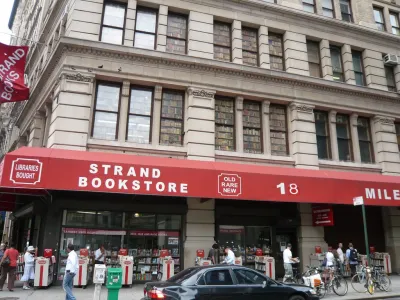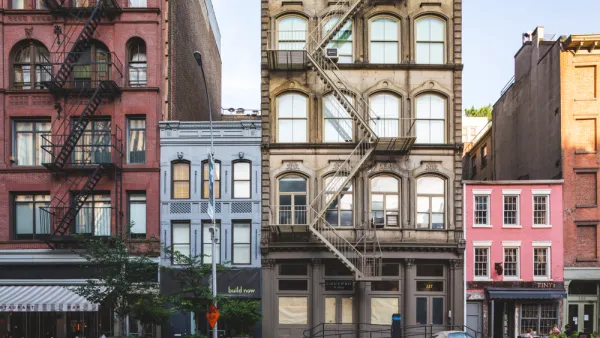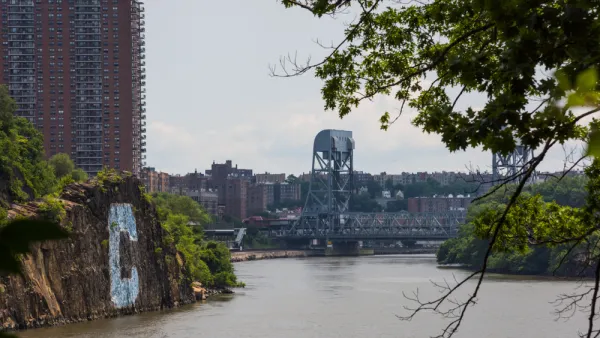The Renaissance Revival building that houses New York City's beloved Strand Bookstore is under consideration by the city's Landmarks Preservation Commission. The case has provoked debate between rival advocates.

"Since vacating 4th Avenue's legendary 'Book Row'—of which it is the only surviving store—in 1957, the Strand has blossomed into an adored cultural institution," Jack Denton writes. "Though colossal gentrification, the rise of Amazon, and various other bookseller-unfriendly forces have felled many other nearby stores, the Strand has remained."
Recently, a proposal from New York's Landmarks Preservation Commission to landmark the exterior of the Strand's building has provoked pushback. "Landmarking will limit the store's ability to make renovations, creating bureaucratic costs for the store's continued existence, the Strand and its supporters argue."
"In some ways, the owner of a for-profit business—albeit a culturally beloved one—fighting the city's proposed regulations on its building is a dog-bites-man story. However, the Strand's story also reflects a growing anti-landmarking coalition that views preservation initiatives as potentially harmful to the historic and culturally significant neighborhoods and buildings they intend to preserve."
Denton goes on to discuss the many angles from which advocates approach the desirability of landmarking. YIMBYs, for instance, oppose what they view as an imposition to new construction. Some anti-gentrification advocates dislike the practice because it can lead to higher perceived neighborhood desirability. Others see it as a way to fight rampant redevelopment. "In New York, landmarking of neighborhoods tends to raise housing costs in the outer boroughs, but not in already dense and expensive Manhattan, where the effect of landmarking on housing prices is small," Denton writes.
While some advocates suggest "pairing historic preservation initiatives with plans for adding affordable housing or easing zoning restrictions outside the landmarked district," to do so "would require the cooperation of multiple independent city agencies that may not be in communication—and which might have rival priorities."
FULL STORY: Is Landmarking a Tool of Gentrification or a Bulwark Against It?

Analysis: Cybertruck Fatality Rate Far Exceeds That of Ford Pinto
The Tesla Cybertruck was recalled seven times last year.

National Parks Layoffs Will Cause Communities to Lose Billions
Thousands of essential park workers were laid off this week, just before the busy spring break season.

Retro-silient?: America’s First “Eco-burb,” The Woodlands Turns 50
A master-planned community north of Houston offers lessons on green infrastructure and resilient design, but falls short of its founder’s lofty affordability and walkability goals.

Test News Post 1
This is a summary

Analysis: Cybertruck Fatality Rate Far Exceeds That of Ford Pinto
The Tesla Cybertruck was recalled seven times last year.

Test News Headline 46
Test for the image on the front page.
Urban Design for Planners 1: Software Tools
This six-course series explores essential urban design concepts using open source software and equips planners with the tools they need to participate fully in the urban design process.
Planning for Universal Design
Learn the tools for implementing Universal Design in planning regulations.
EMC Planning Group, Inc.
Planetizen
Planetizen
Mpact (formerly Rail~Volution)
Great Falls Development Authority, Inc.
HUDs Office of Policy Development and Research
NYU Wagner Graduate School of Public Service



























